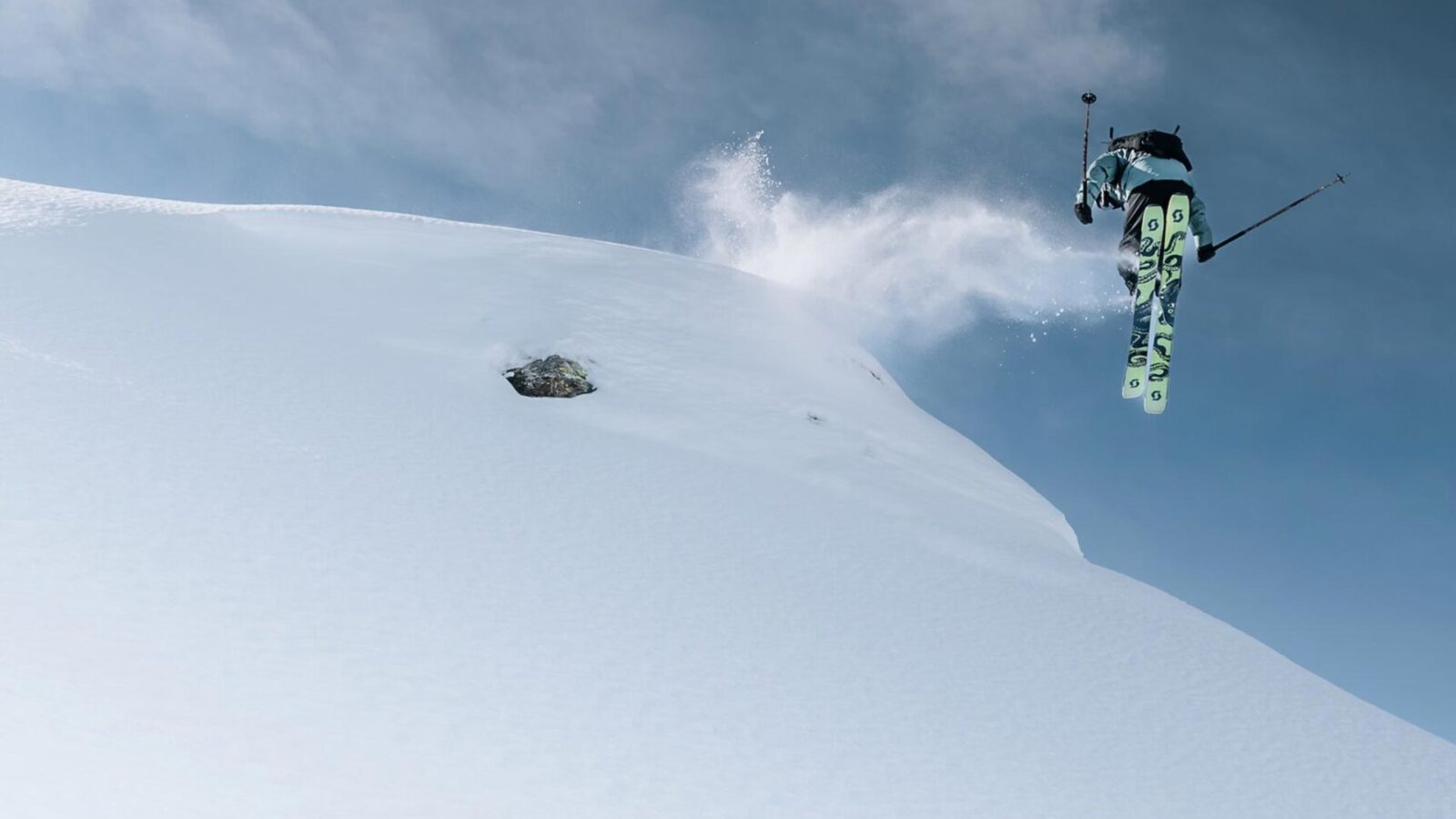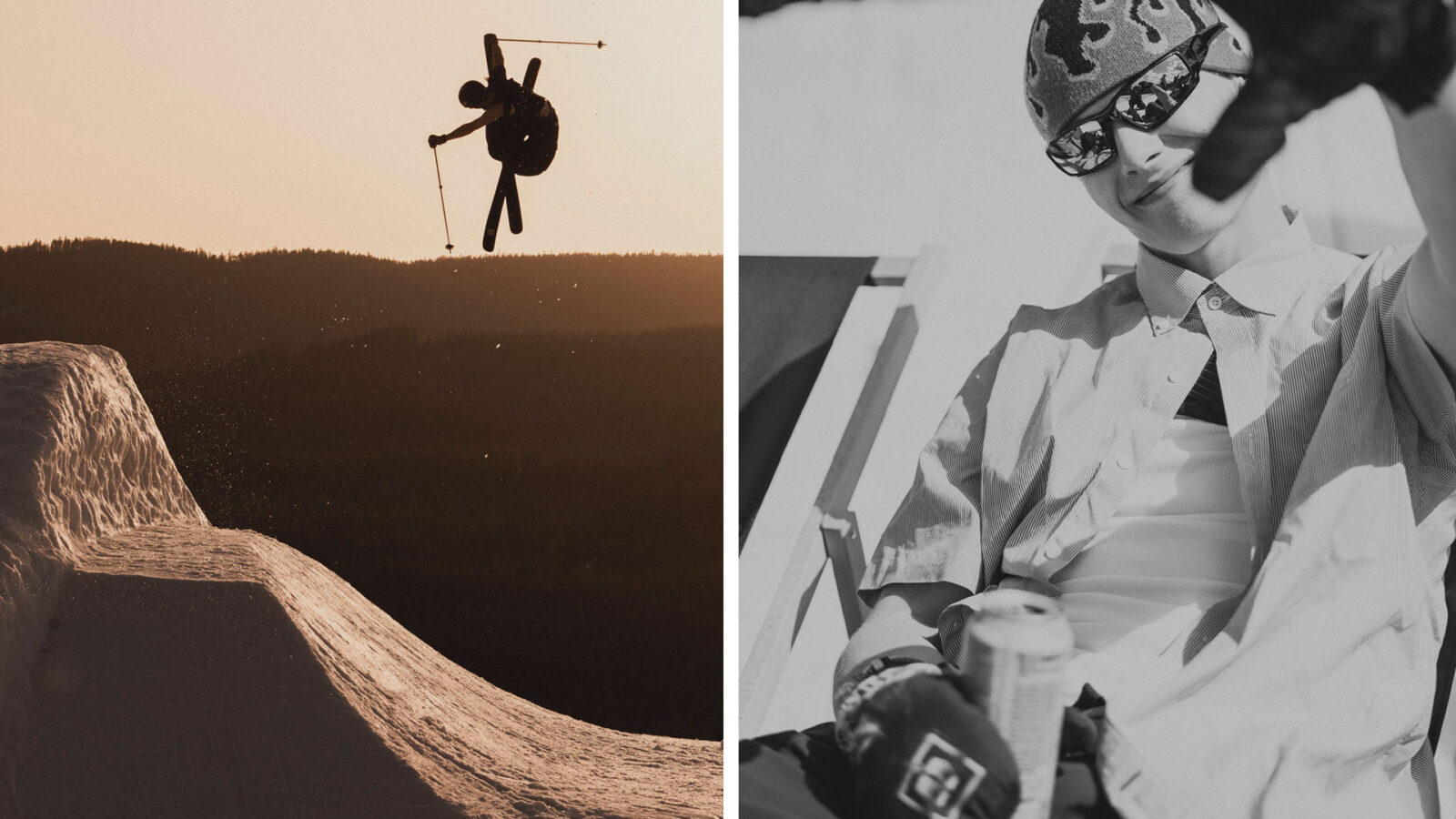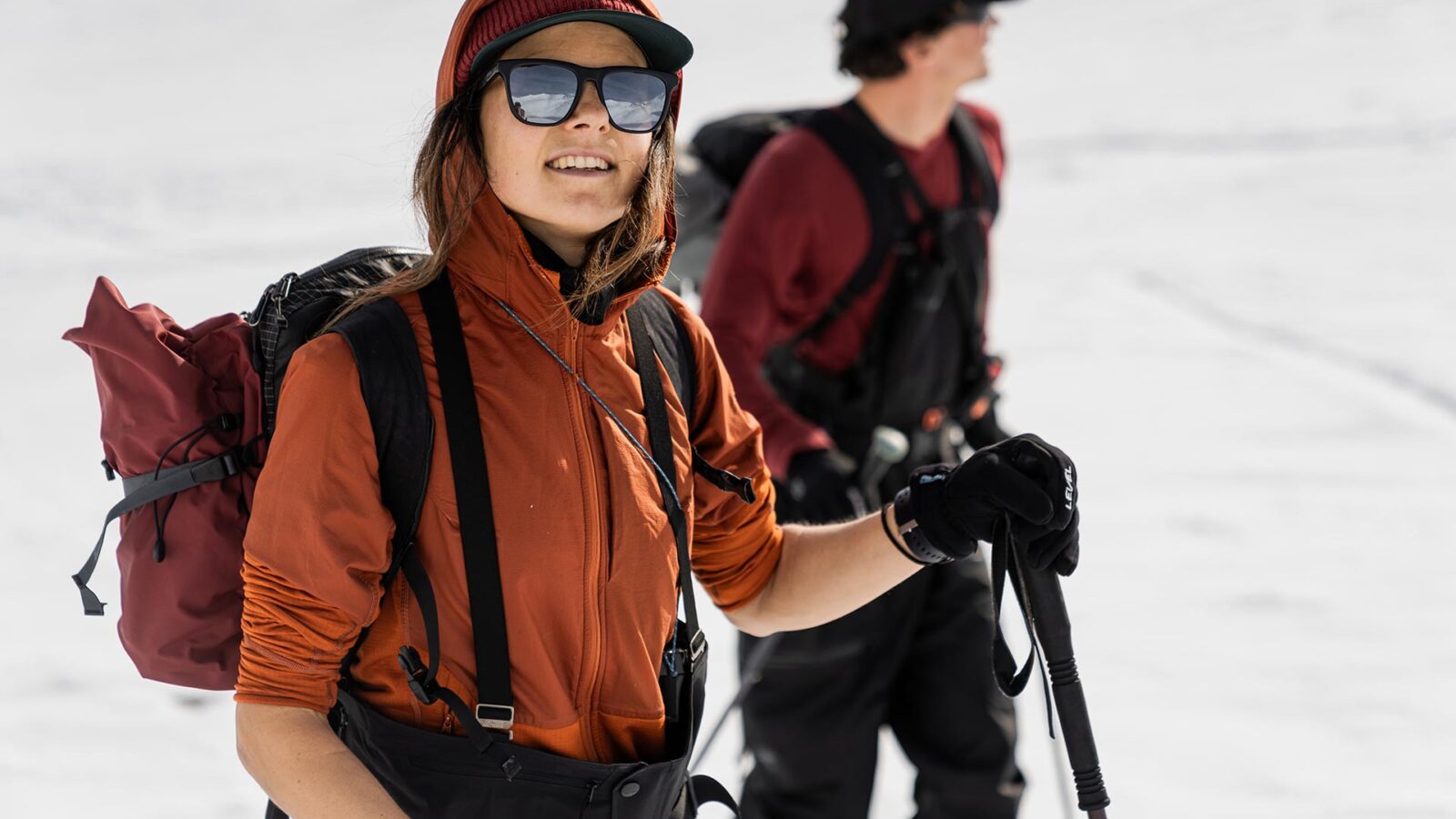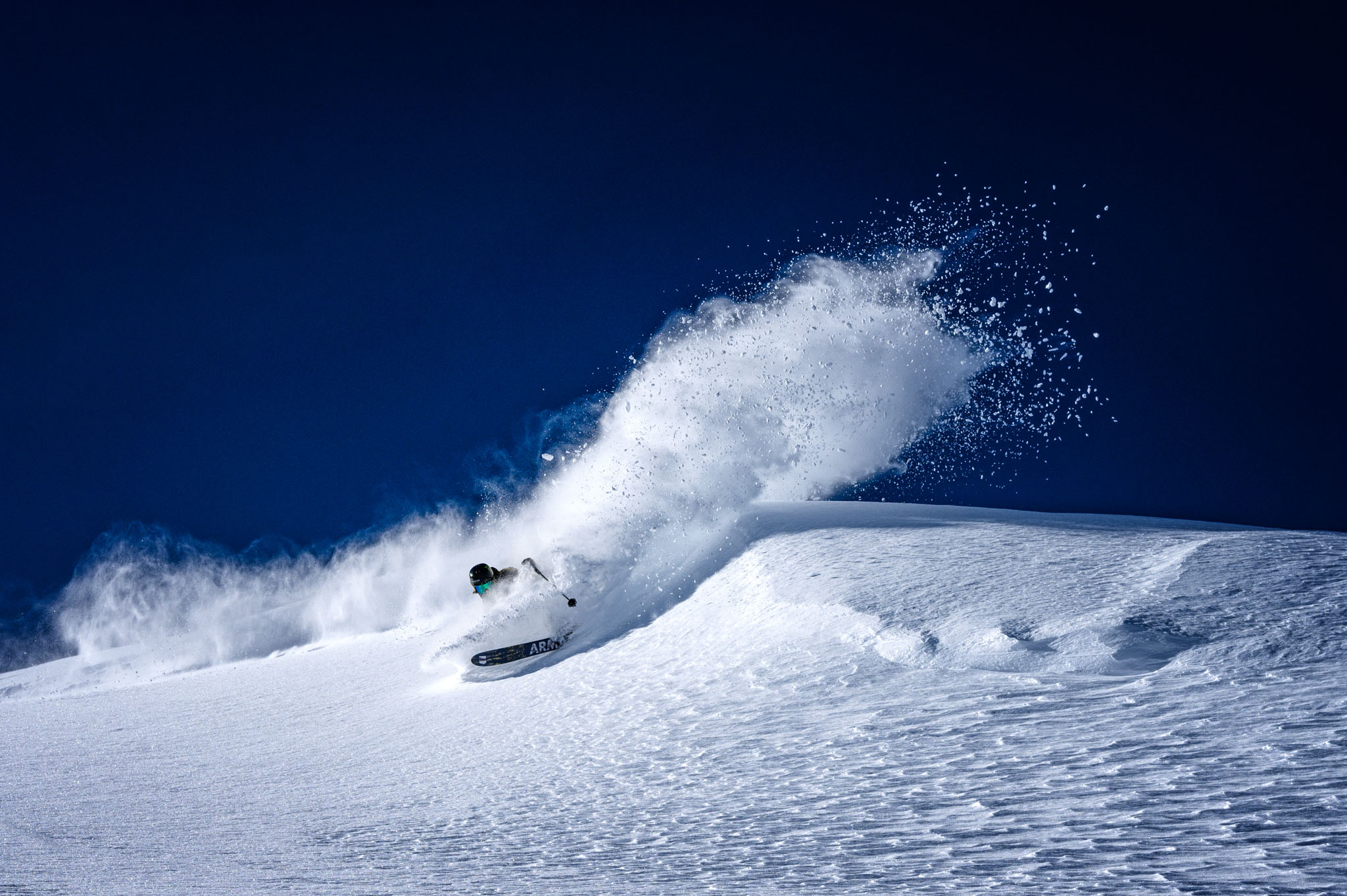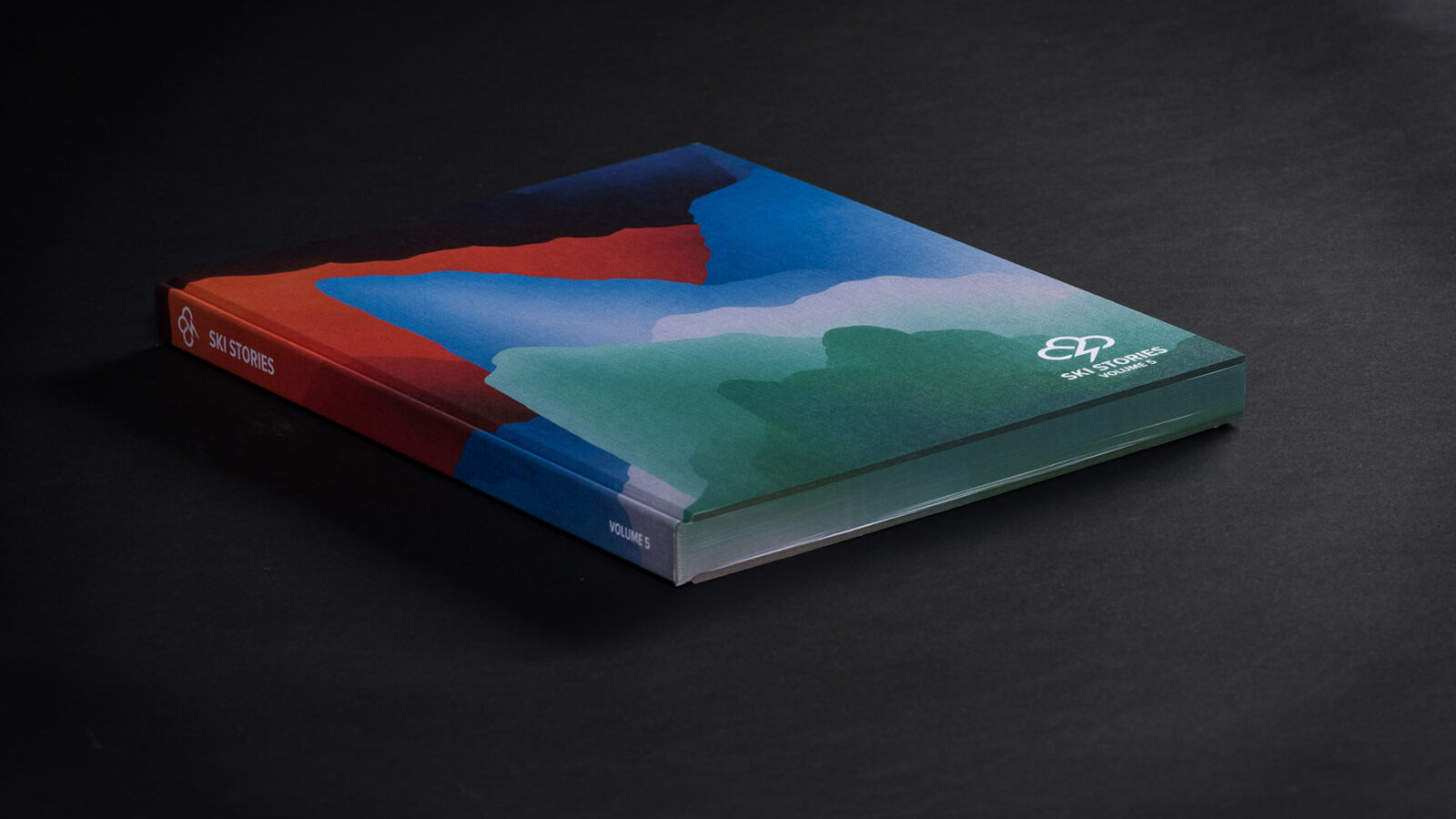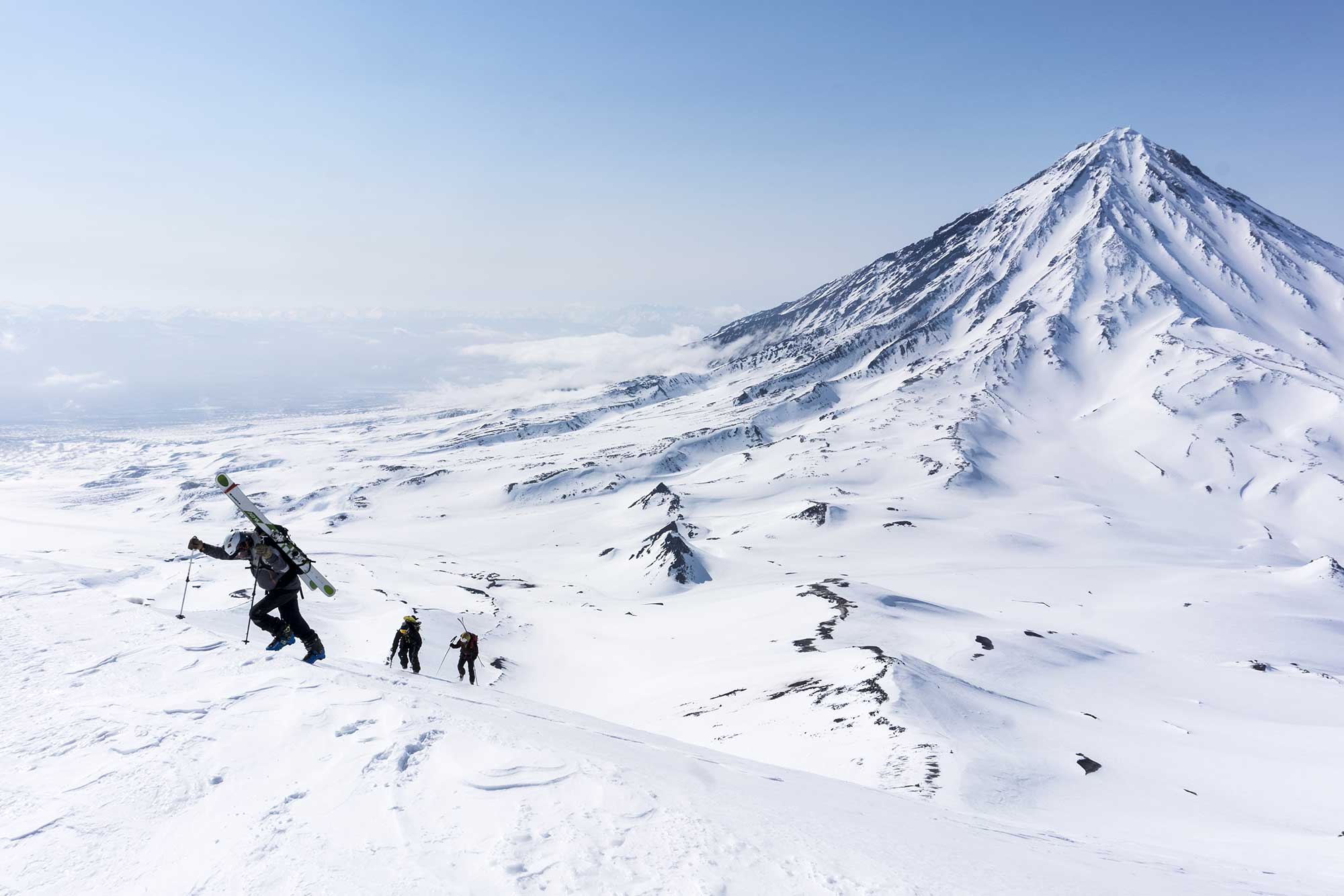
Stories
Adventure continues
Off the Grid: Freeriding in Kamchatka | Part 2
Words: Jake Fojtik, Elliot Levy, Drew Herder
Photos: Jake Fojtik, Drew Herder
In Part 1 of Off the Grid: Freeriding in Kamchatka, we left the Burger Boyz stranded on the side of the road in the middle of nowhere, waiting for their next ride, Ivan. Their journey continues with Part 2.

Kamchatsky Chronicles // FULL FILM // PopTop Productions (Vimeo)
Sidetracked in Esso
Eventually a woman in a small white Honda pulled over and introduced herself as Victoria, Ivan’s girlfriend. She said they’d brought two cars to fit all our gear, and that Ivan was twenty minutes behind. Twenty minutes turned into forty, and forty minutes turned into hours until another small car finally pulled up. The pulsing sounds of thumping Russian techno inundated the desolate highway as a man wearing a gold chain and Adidas sweatpants stepped out.
“That’s not Ivan,” said Victoria.
The man explained to Victoria that Ivan’s trailer had lost a wheel some 50 kilometers down the road. Luke, Herder and I loaded up with Victoria and headed out to find Ivan, leaving Andrey, Herder, Tom, and Elliot and our gear on the side of the road.

After Alexey and Kyril towed us out of the woods, they loaded their sleds onto their truck and took off back to Petropavlosk, leaving us and our gear stranded on the side of Kamchatka’s only highway. Photo: Fojtik
We discovered Ivan and his truck waiting at a construction site, then continued further to look for his missing wheel. In a ditch a few kilometers later, we found a wheel—the wrong one. It didn’t fit on Ivan’s truck, but we watched with equal parts disbelief and skepticism as Ivan slipped a handful of rubles to a construction worker to weld it onto the axle. The repairs somehow holding for the moment, we all drove north to regroup with the boys stuck on the side of the road. They loaded up with Ivan, and finally we were underway.
On the drive, Ivan told us that a storm had our planned destination hit Klyuchevskaya Sopka, completely blocking all access to the mountain for at least three days. At his recommendation, we went east instead to the sleepy town of Esso, where he found us a hostel.
The party ended when one of the locals cornered Luke in the kitchen and tried to stab him with a fork.
We were grateful to have a solid roof and soft beds. In the common room below us, a group of locals were having a party, singing and dancing to 80s-style Russian disco. They offered us pelmeni dumplings and swigs of a mysterious yellow libation that tasted like an unholy fusion of vodka and battery acid. The party ended when one of the locals cornered Luke in the kitchen and tried to stab him with a fork. His friends took him away and sat him down for the night, and the hostel owner chased us all out of the kitchen and into our rooms.
With bad weather blocking our access to Klyuchevskaya Sopka, we went skiing outside Esso instead. Ivan towed us into the backcountry, and we got our fill with 150-meter, mini-golf style lines etched between rock bands. Lunch was in a hut that Ivan and some locals had built the previous summer, and after a full day of skiing, we drank deep from tall, cold Tuborg beers in the soothing warm waters of the Esso hot springs. When the weather cleared, we left Esso for Klyuchi, the town that would serve as our launchpad for the Klyuchevskaya Sopka volcano.
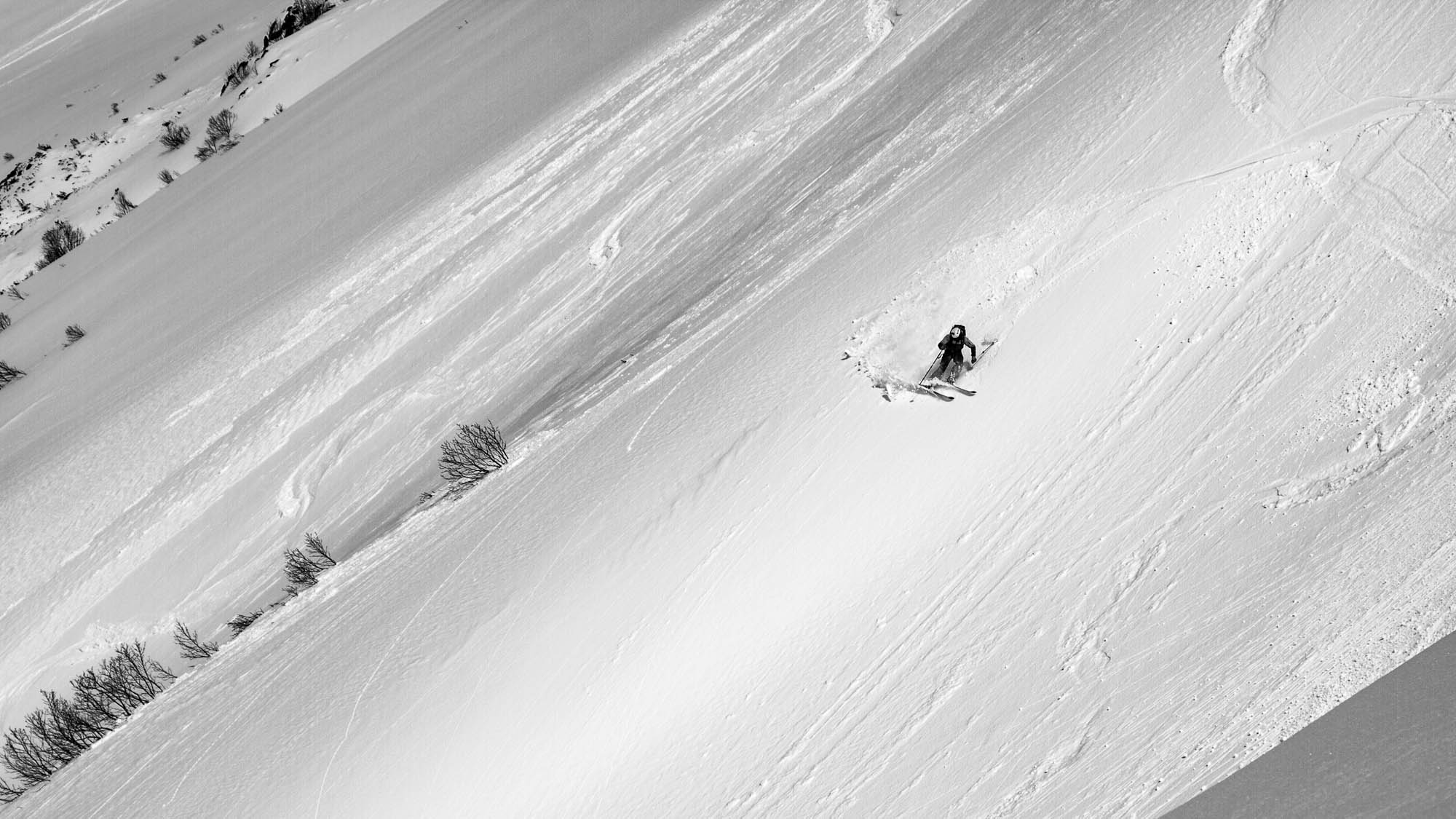
Andrey works his way into a chute outside Esso. Photo: Fojtik

Riding high after a full day of lapping chutes, Tom skis back towards Esso, somewhere in the valley below. Photo: Fojtik
Klyuchevskaya Sopka
As we drove north, we got our first glimpse of our second main objective. The prominence of Klyuchevskaya Sopka is almost comical. With no nearby mountain groups, its nearly 5,000-meter profile soars above the surrounding plains. A perfect cone, the volcano rises at almost exactly 45 degrees on all aspects. The mountain looks like it shouldn’t exist—like a discarded concept version of Earth not considered for mass production, the peak too sharp, the lava planes weird. Like the details hadn’t been fleshed out yet. Like the intersection between birch forest, frozen Siberian swamp and dominating peaks had been considered too surreal by focus groups, and the project was shelved. During the Soviet era, the lava plains around Klyuchevskaya Sopka were testing grounds for Soviet lunar rovers and other spacebound equipment. Even under meters of snow, it was easy to see why. The day we arrived, grey smoke began spewing from the volcano. It wouldn't stop until long after we left.
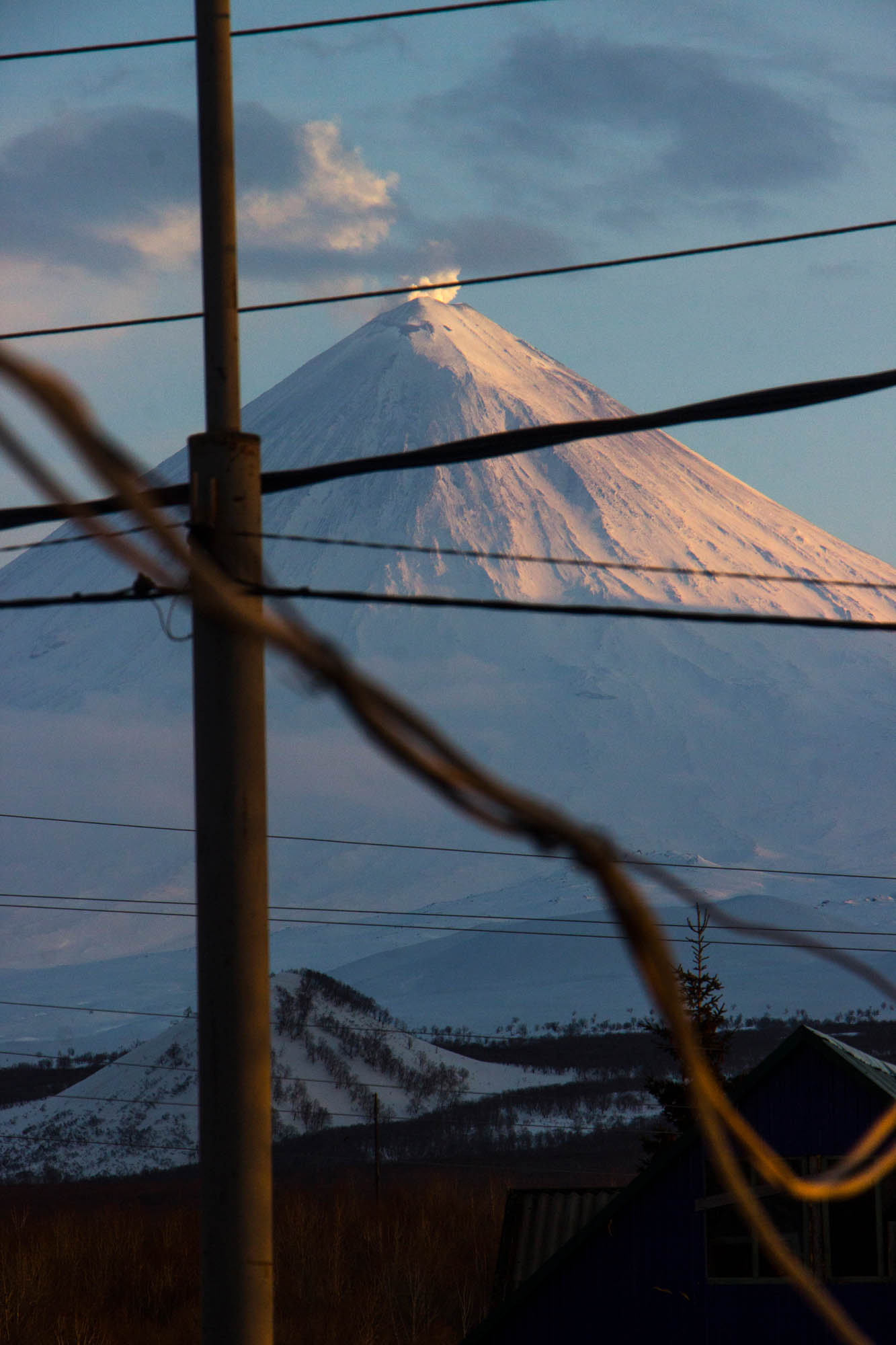
Klyuchevskaya Sopka as seen from town of Klyuchi. The day we arrived, the volcano started spewing ash, and didn’t stop until long after we left. Photo: Herder
The town of Klyuchi presented its own challenges. The town is right next door to a prominent military facility, and foreigners are not welcome here. We’d heard nightmarish rumors about skiers who had inadvertently crossed into the base, and spent the night in the forest running from Russian soldiers. Ivan somehow found us a hotel for the night. Hosting seven foreign nationals so close to an active military base is a sure way to attract unwanted government attention, so our names were conveniently left off the hotel visitor log, and we paid exclusively in cash.
Local reindeer hunters, acquaintances of Ivan, towed us to a volcanologist’s research hut at the base of Klyuchevskaya. Heavy weight, variable snow, difficult terrain and route finding slowed the tow-in to a crawl. During our approach, we watched the wind rip clean white snow from the mountain’s upper third, leaving an icy sheen in its wake.
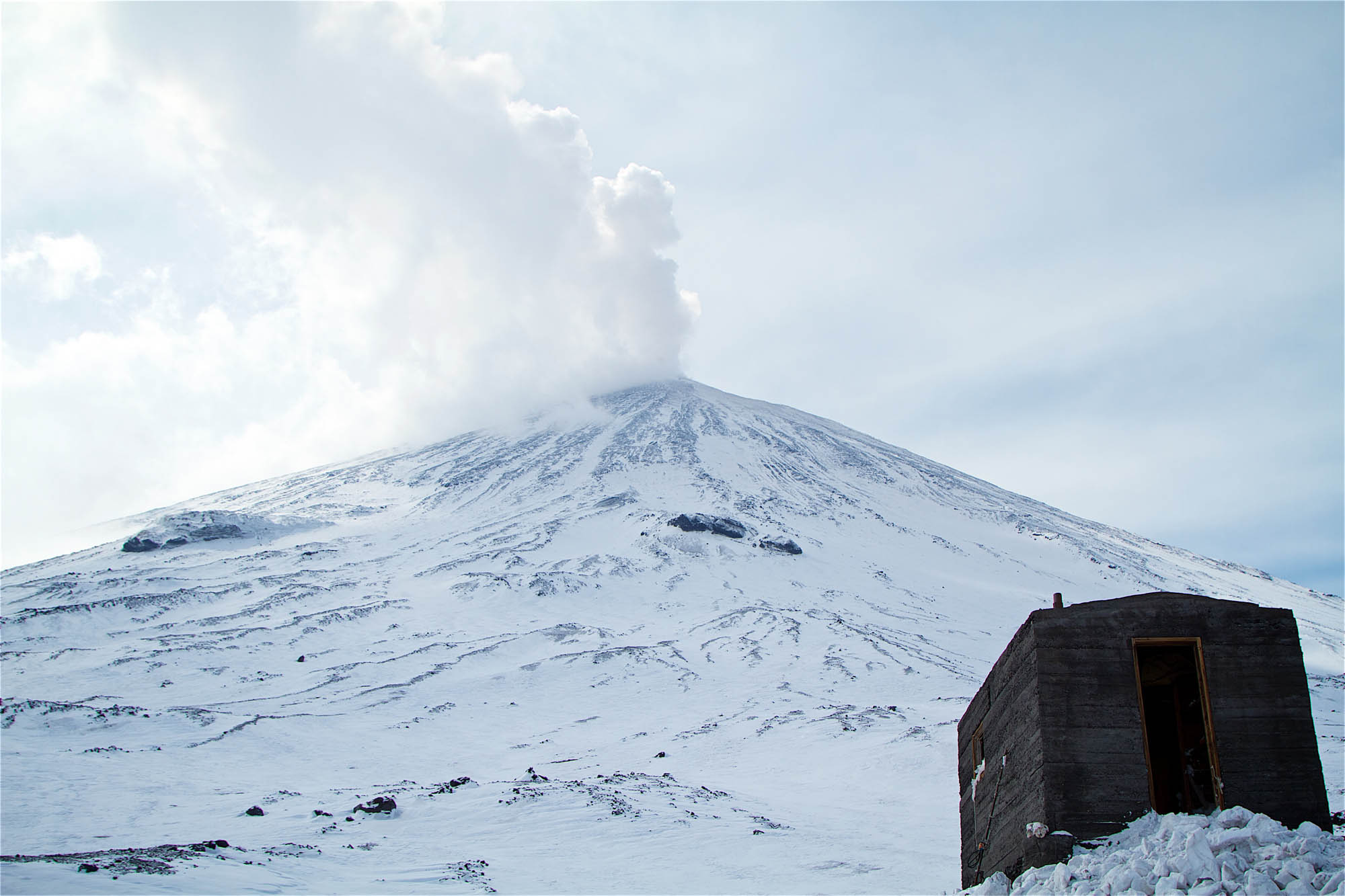
Home sweet home. This tiny volcanologists´ hut played host to seven skiers at the base of Klyuchevskaya Sopka. Photo: Fojtik
The research hut, if you can call it that, was a derelict cement bunker filled floor-to-ceiling with snow. Tom had to slither in through a broken window to start the excavation process. Once dug out, the seven of us barely fit inside, and had to sleep staggered head-to-toe. On the first night, even jammed together in our -20 and -40 degree sleeping bags, the cold bit at our noses and toes.
Life on the volcano was harsh. Black bits of pulverized rock and volcanic dust lingered in our snowmelt drinking water. Our stoves, sick from burning unleaded gasoline rather than clean white gas, spat and sputtered at random. Too cold to cook outside, the stoves fumigated the hut, the stench of gas permeating sleeping bags, clothes, and lungs. Ash leaked from the volcano, coating a new part of the mountain in a thin, grey layer each day. The snow pits we dug all showed the same horizontal zebra-stripe patterns, grey layers of deposited ash and pulverized rock separated by layers of wind board.

"In this world, there are two types of people. Those with loaded guns, and those who dig. You dig.” Herder excavates the volcanologist hut. Upon our arrival, we found it filled with snow from floor to ceiling, and were unable to even open the door. Photo: Fojtik

Close quarters inside the hut. Photo: Fojtik
On the first day we checked crevasse rescue systems and scouted potential routes through the glaciers to the summit. My throat was raw, and I had trouble breathing as I struggled to keep up on the skin track. Later that day, I felt shaky and feverish. The crew found a potential route through the glacier and spent the night planning for a summit bid, depending on the weather the following day. By nightfall, I knew I wouldn’t be a part of the summit attempt.

As far as the eye can see: Luke rides back to the hut after a recon mission to find a way through the glaciers on Klyuchenskaya Sopka. The lava fields surrounding the volcano extend some 40 kilometers in every direction.
Herder’s insulin froze solid in its syringe, and he snapped a needle trying to inject himself.
The weather looked good the next morning, and six boys set out for the summit. Too sick to leave my sleeping bag, I stayed behind in the hut. Under a bluebird sky with no wind, this was the warmest weather we’d had on the volcano so far. Layman came back first, his toes turned blue on the ascent, and the rest followed a few hours later. They’d climbed hard and far, and turned around roughly 200-300 meters shy of the summit. At their high point, the wind had completely scoured any snow from the mountain, leaving only rocks and a 45-degree ice-skating ring littered with bits of pumice. Brutal cold and a growing lenticular cloud also contributed to the turnaround. At -20 C before windchill, even hiking with puffy down layers on wasn’t enough to stay warm. Herder’s insulin froze solid in its syringe, and he snapped a needle trying to inject himself. On the descent, the boys skied for hours - hours - to get back to the hut. Not long after they returned, a dark, ominous, UFO-shaped lenticular cloud swallowed the summit.
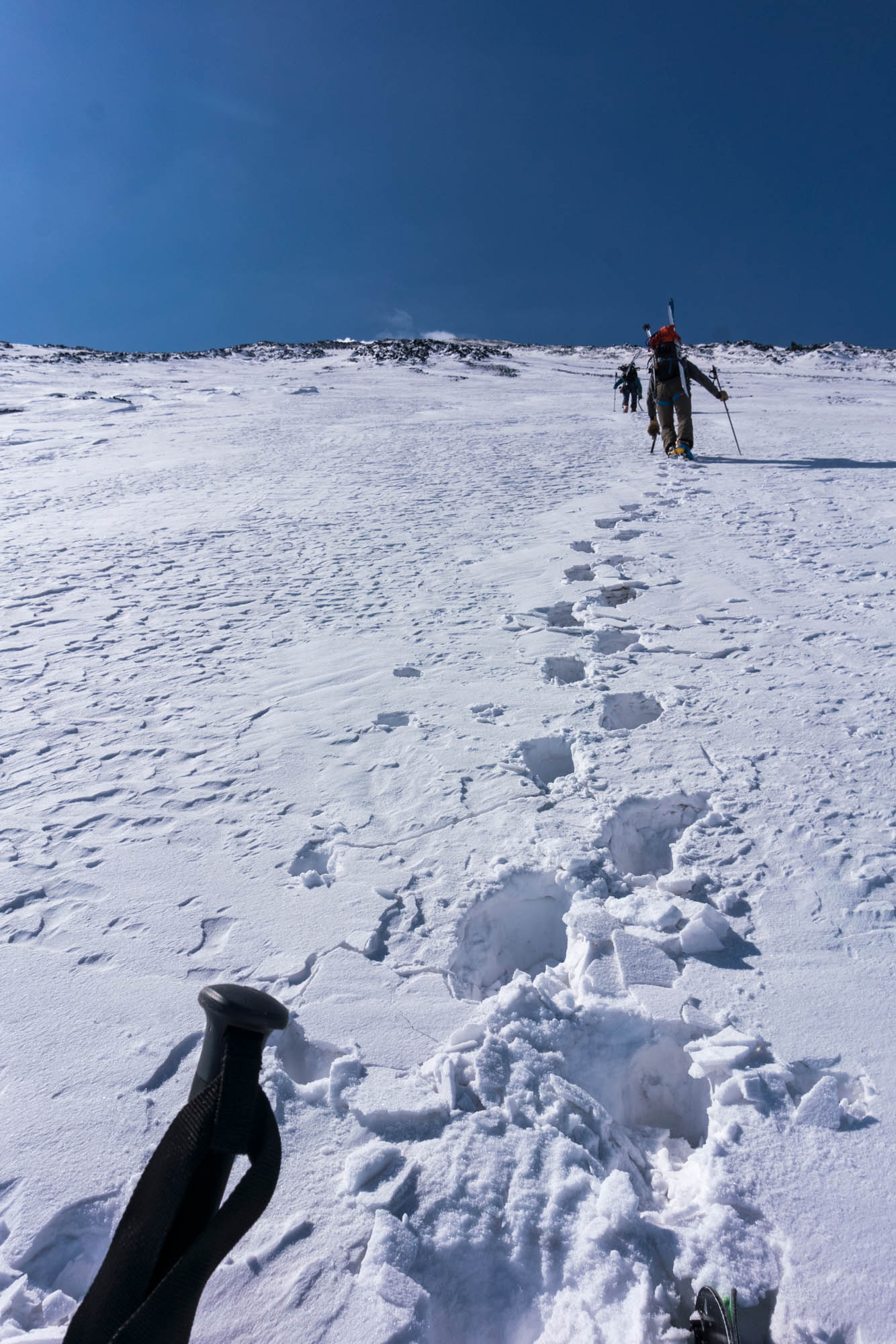
Bootpacking high on the flanks of Klyuchevskaya. Photo: Herder

There’s a volcano up there somewhere. Andrey carves a few turns on the lava fields below Klyuchevskaya Sopka as the mountain gets engulfed in clouds.
That evening we watched the golden sun wrap around the far side of Klyuchevskaya, and melt into the plains, far below. No one said it, but the trip felt finished. We discussed another summit attempt the following day; some of the boys wanted to finish the climb and take the full ride from summit to floor. I wanted another shot at it—with another night’s rest, I might be well enough. But, on a peak as brutish as Klyuchevskaya, you don’t get to ask for seconds. The boys had safe passage up and down, and came damn near close to a full descent of a spectacular and dangerous volcano in a remote, far-off land. It was more than good enough.
The debate concluded when our stoves finally, after some 20 days of abuse and unleaded fuel, died. The next morning we called Ivan and skied out at noon. We left Klyuchi that day, and pulled into Petropavlovsk at 3 in the morning.

Klyuchevskaya Sopka in all its glory. Even 20 kilometers away, fully zoomed out, I still couldn´t capture the entirety of the mountain. Our hut can be seen in this picture: the tiny black speck in about the middle of the frame, below the black glacier in the center, where the cone of the mountain meets the lava field. Photo: Fojtik

Sunset over Kamchatka. After pulling us out of Klyuchevskaya Sopka, Ivan drove us through the night to Petropavlosk.
Petropavlovsk
I spent the final days recovering in Petropavlovsk. We went back to Harat’s with Ivan and met some of the Kamchatka Freeride Community. The Russians treated us exceptionally well; everyone wanted to talk to the weird Americans in their bar.
I don’t remember paying for a single drink that night, I don’t think anyone did. I remember dancing to Russian songs, and English songs in heavy Russian accents. I remember one of the boys passed out and vomiting over the railing outside Harat's. I remember talking to a Russian about metal, and his favorite band, Pantera. I remember Herder crawled into a ski bag and fell asleep in it. I don’t remember how any of us got back to the apartment.
The next morning, Andrey miraculously had enough energy to muster one final ski outing. He called Ivan, and took Elliot and Layman to Avachinsky, the massive conical volcano looming over Petropavlovsk. The four of them pinballed through dirt backroads, across mud plains and snowfields on Ivan’s sled. From there, they booted to the summit of Koryaksky, a smoldering, smoking pit of rocks and snow where volcanic gases oozed from the ground and through the snow before being stirred into columns by the billowing winds. As they skied from the summit, the sun set over the Kamchatka peninsula, morphing from fire reds and oranges to a deep dark beet-purple. The boys skied down the variable snow together, and even Ivan joined in on his splitboard. After the descent, he heroically willed his sled through the dark across snowfields, rivers and mud to get back to his car at the trailhead.
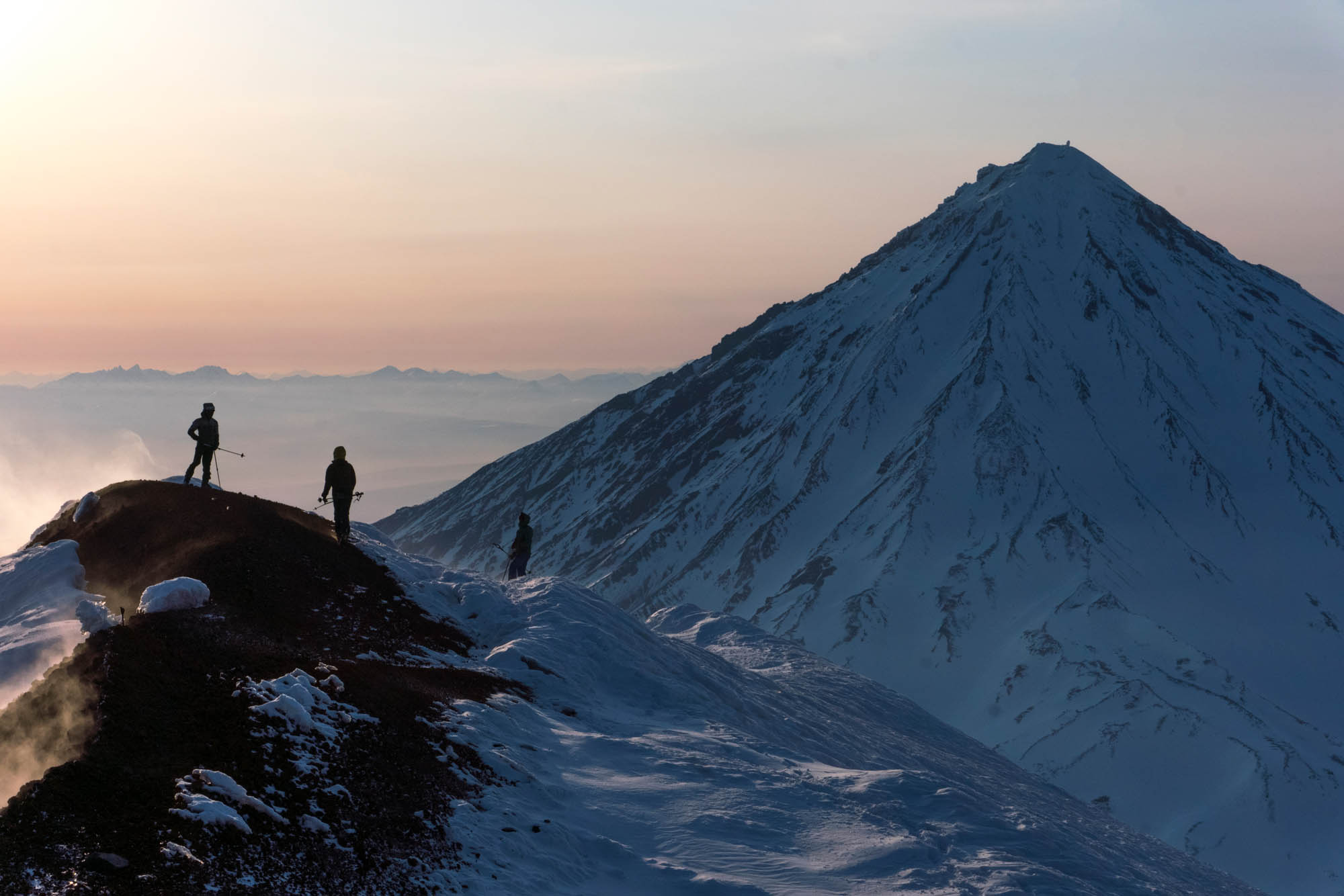
Topping out on Koryaksky with the Avachinsky volcano dominating the horizon. Photo: Herder
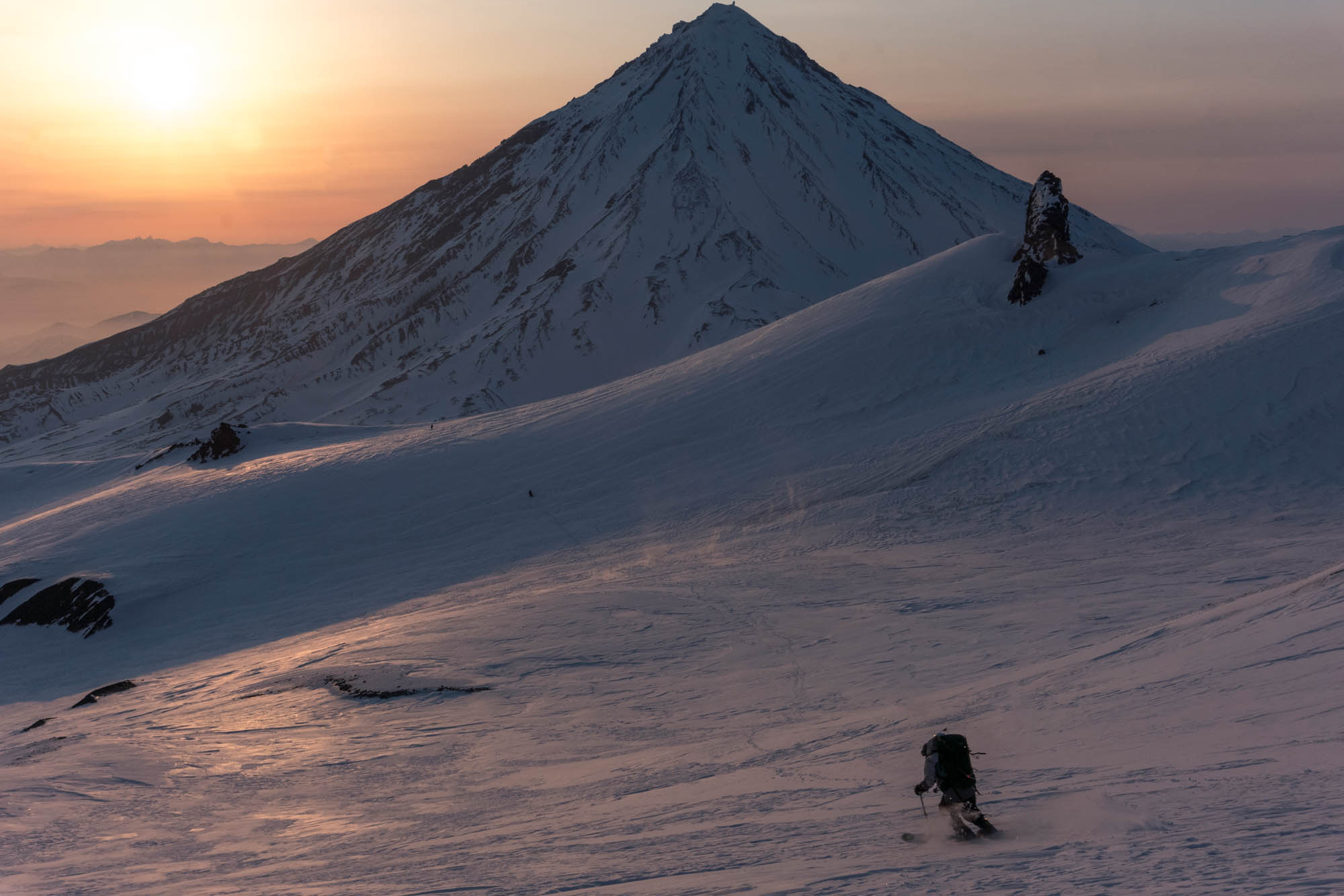
Andrey scores sunset turns on the northwest face of Avachinsky. Photo: Herder
I couldn’t find the words to describe my feelings as we flew out of the peninsula, watching the great white expanse again sprawling out below. A confusing cocktail of sorrow, relief, and joy clouded my head. Sorrow, for having to leave such a strange and beautiful place. Relief, because everyone survived intact; an outcome not guaranteed when tromping around active volcanoes deep in the Russian backcountry. And joy, to see home after such a wild trip.
But back home, nothing had changed, nothing was different and nobody cared. We went skiing, and the world kept moving. Two weeks after we touched down in the US, I skied the scariest line of my entire life. Two months later, I was packing up to move to Europe for medical school. Returning to these wild and desolate places, whether in memory or planning the next expedition, keeps me centered when life gets out of control, and never fails to make me smile. Sometimes the best, only thing I can do is to go as high and far away from civilization as I can, and turn the planks of wood below my feet loose and hold on for the ride.
A certain type of space is created in our minds by returning to unrestrained and wild places. Space for creativity, spontaneity, confidence, satisfaction and dreams. The physicality of completing objectives in the elements is meditative. For hours on end, we put one foot in front of the other while wind howls down to the bottom of our eardrums, snot drips from flaring nostrils, our breath rarely audible though operating at max capacity.
What we were worried about in the urban world is held in abeyance when we flow through the hills. Sometimes it’s the satisfaction that feels best when it’s all over and we come back a better version of ourselves. We have chosen to face unknown dangers in a quest to widen the horizons of our own world; our memories of the most humbling moments are the tokens we carry upon return. - Elliot Levey

